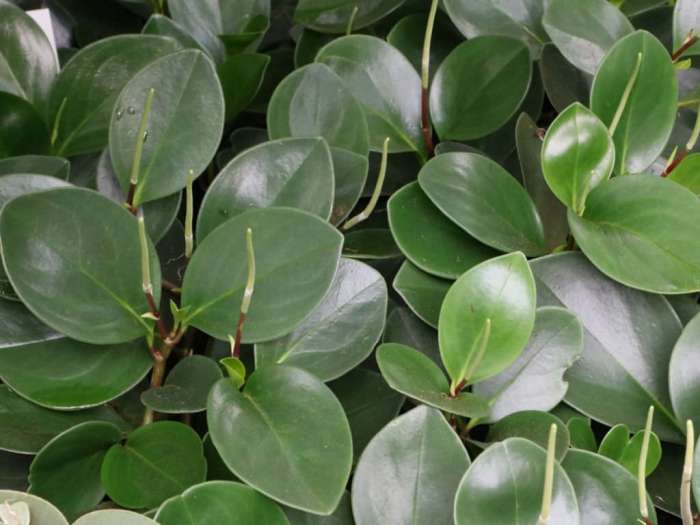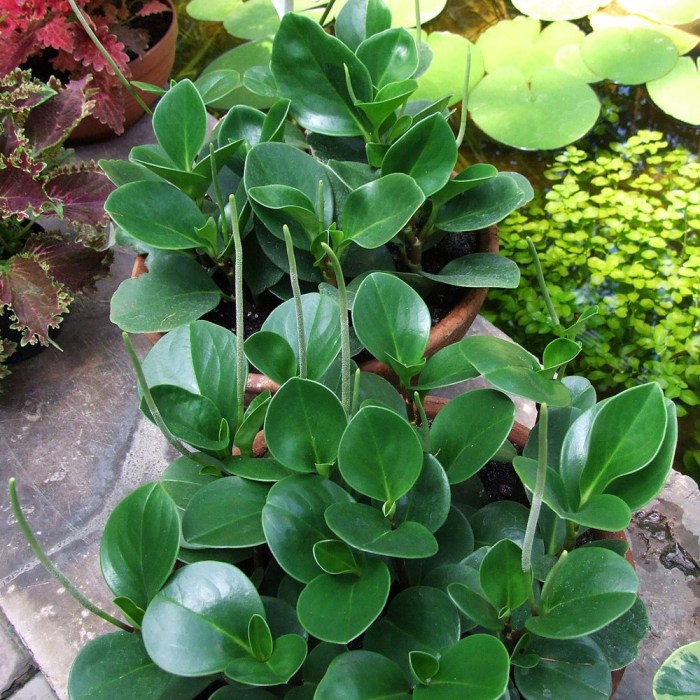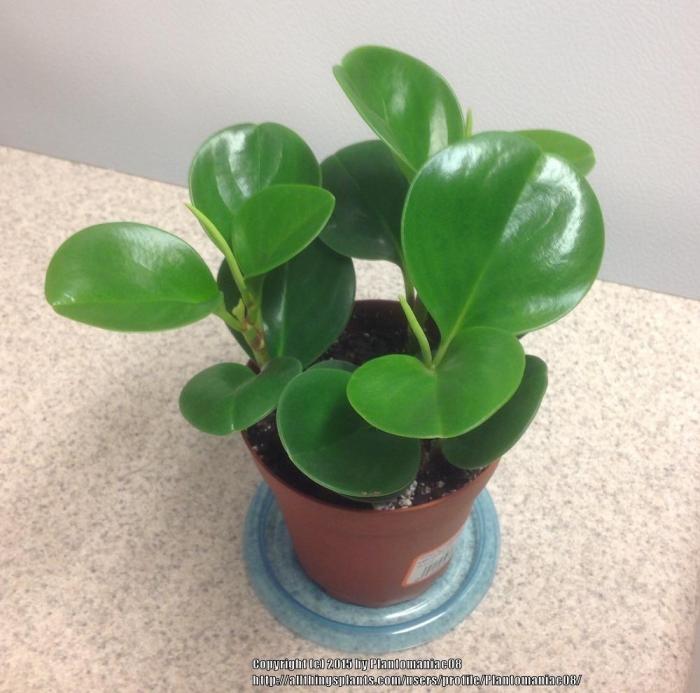Propagation Methods

Baby rubber tree plant – Propagating your baby rubber plant,Ficus elastica*, is a rewarding experience, allowing you to expand your collection or share these beautiful plants with others. Several methods offer varying degrees of success, depending on your skill and resources. Understanding the optimal timing and conditions significantly impacts the outcome.
The following sections detail three common propagation methods, highlighting their advantages and disadvantages to help you choose the best approach for your situation.
Stem Cuttings
Stem cuttings are a popular and relatively straightforward method for propagating
-Ficus elastica*. This technique involves taking a cutting from a healthy stem and encouraging it to root in a suitable medium. Proper preparation and care are key to success.
- Select a healthy stem cutting, approximately 4-6 inches long, with at least two nodes (the points where leaves emerge).
- Remove the lower leaves to prevent rot and allow for better root development. Dip the cut end in rooting hormone powder for enhanced rooting.
- Plant the cutting in a well-draining potting mix, ensuring at least one node is buried. Keep the soil consistently moist but not waterlogged.
- Provide bright, indirect light and maintain a warm temperature (around 70-75°F) for optimal root development. This typically takes several weeks to a couple of months.
Air Layering, Baby rubber tree plant
Air layering is a more advanced technique that involves rooting a stem while it’s still attached to the mother plant. This method is particularly useful for propagating thicker stems or those that are difficult to root from cuttings. While it takes longer, it generally yields a higher success rate.
- Select a healthy stem on the mother plant. Gently scrape away a small section of bark, exposing the cambium layer (the layer just beneath the bark).
- Apply rooting hormone powder to the exposed area. Wrap the area with damp sphagnum moss, securing it with plastic wrap or aluminum foil.
- Keep the moss consistently moist. Roots will develop within several weeks to a few months. Once roots have formed, carefully cut the stem below the rooted area and plant it in a pot.
Water Propagation
Water propagation is a simple method that allows for easy observation of root development. It’s less reliable than other methods, especially for
-Ficus elastica*, but it can be successful if done correctly. The key is to maintain clean water and prevent rot.
- Take a stem cutting, similar to the stem cutting method, but place it directly in a jar of clean water. Change the water every few days to prevent bacterial growth.
- Place the jar in bright, indirect light. Roots will usually develop within a few weeks, though it can take longer.
- Once roots are established and sufficiently long (a couple of inches), plant the cutting in a well-draining potting mix.
Optimal Propagation Timing and Conditions
The best time to propagate
-Ficus elastica* is during the spring or early summer months. These warmer months provide optimal temperatures and longer daylight hours, which promote faster root development and overall plant growth. High humidity also greatly aids the success of propagation. Maintaining a consistently moist environment, but avoiding waterlogged conditions, is crucial for all methods.
Comparison of Propagation Methods
While all three methods can be successful, they differ in their success rates and timelines. Stem cuttings offer a relatively high success rate if done correctly and are generally quicker than air layering. Air layering boasts a higher success rate but takes significantly longer. Water propagation is the least reliable method for
-Ficus elastica*, often resulting in slower growth and a higher chance of rot.
Aesthetic Considerations and Styling

The beauty of a baby rubber plant lies not only in its vibrant green foliage but also in its adaptability to various design aesthetics. Choosing the right pot, placement, and accompanying elements can elevate this charming plant from a simple addition to a stunning focal point in your home. Let’s explore how to seamlessly integrate this versatile plant into different interior design styles.
Baby Rubber Plant Styling in Different Decor Styles
The inherent elegance of the baby rubber plant allows it to complement a wide array of interior design schemes. Consider these examples to inspire your own creative arrangements.
- Minimalist Style: A single, mature baby rubber plant in a sleek, white ceramic pot serves as a statement piece in a minimalist space. Its clean lines and vibrant green contrast beautifully with the neutral palette, adding a touch of life without overwhelming the room’s simplicity. Avoid overcrowding; let the plant stand alone as a minimalist sculpture of nature.
- Bohemian Style: In a bohemian setting, a baby rubber plant thrives in a woven basket or a macrame hanger. Surrounding it with other plants, textured throws, and earthy tones enhances its natural charm. The plant’s lush foliage blends seamlessly with the eclectic mix of patterns and textures typical of this style. Consider a terracotta pot for an added rustic touch.
- Modern Style: A baby rubber plant in a geometric, metallic pot adds a touch of sophistication to a modern interior. Its clean lines and simple form complement the sharp angles and sleek surfaces of modern furniture. Positioning it on a minimalist shelf or side table creates a visually appealing focal point. A dark grey or black pot would beautifully contrast the plant’s vibrant green.
Styling the Baby Rubber Plant with Different Pots and Planters
The pot you choose significantly impacts the overall aesthetic. Different materials and colors create distinct vibes.
The vibrant green leaves of a baby rubber tree plant unfurl, a miniature rainforest in a pot. Its growth, though slow, mirrors the careful nurturing needed for other tropical plants, much like understanding the intricacies of how to plant a graviola tree requires patience and specific knowledge. Just as the rubber plant thrives in bright, indirect light, the graviola also needs a similar environment to flourish, revealing the interconnected needs of tropical flora.
- Ceramic Pots: Ceramic pots offer a wide range of colors, shapes, and textures. Sleek, white ceramic pots suit minimalist styles, while brightly colored or patterned ceramic pots can add a pop of personality to bohemian or eclectic settings. Glazed ceramic is easy to clean, a plus for plant care.
- Wooden Planters: Wooden planters bring a natural, rustic feel to any space. Light-colored wood complements modern and minimalist aesthetics, while darker wood adds warmth to bohemian or farmhouse styles. Choose wood that is treated to withstand moisture.
- Metal Planters: Metal planters, particularly those in copper, brass, or iron, create a more industrial or modern feel. Their durability and sleek designs complement modern and contemporary spaces. Ensure the metal is non-reactive to prevent damage to the plant.
Maintaining the Aesthetic Appeal Through Pruning and Shaping
Regular pruning is essential for maintaining the baby rubber plant’s aesthetic appeal and promoting healthy growth.
Pruning involves removing dead, damaged, or overgrown leaves. This not only enhances the plant’s appearance but also encourages bushier growth. Use sharp, clean pruning shears to make precise cuts, just above a leaf node. Avoid over-pruning, as this can stress the plant. Regularly pinching back new growth tips can also help maintain a compact and full shape.
This process, while seemingly simple, ensures the plant remains visually appealing and prevents it from becoming leggy or sparse.
Visual Representation (Illustrative Descriptions): Baby Rubber Tree Plant

Understanding the visual characteristics of a baby rubber plant, both healthy and unhealthy, is crucial for effective care. Visual inspection allows for early detection of problems, enabling timely intervention and preventing significant damage. The following descriptions detail the visual cues associated with a healthy plant, nutrient deficiency, and pest infestation.
Healthy Baby Rubber Plant
A healthy baby rubber plant typically presents as a compact, upright shrub with a vibrant appearance. Its leaves are a rich, deep green, often with a glossy sheen. The leaves are elliptical to oval, with smooth edges and a leathery texture. They are arranged alternately along the stems, creating a full and lush appearance. The stems are relatively stout and smooth, exhibiting a reddish-brown hue, especially on younger growth.
The branching pattern is generally simple, with new growth emerging from the top of the plant and occasionally from the axils of older leaves. The overall shape is symmetrical and balanced, showing no signs of wilting, yellowing, or unusual spotting. The plant exhibits vigorous growth, with new leaves regularly unfurling.
Nutrient Deficient Baby Rubber Plant
A baby rubber plant suffering from nutrient deficiency will show several distinct visual signs. The most noticeable symptom is often chlorosis, a yellowing of the leaves. This yellowing may start at the leaf margins or between the veins, depending on the specific nutrient lacking. The leaves may also become smaller than usual and appear stunted. The leaf texture may become thinner and less leathery.
Severe deficiency can lead to leaf drop, and the overall growth rate will be significantly reduced. The stems might appear thinner and less robust than a healthy plant of the same age. The color of the leaves might shift to a pale, almost yellowish-green color, indicating a lack of chlorophyll due to inadequate nutrients. For example, nitrogen deficiency manifests as a general yellowing, while iron deficiency causes yellowing between the leaf veins.
Pest Infested Baby Rubber Plant
The appearance of a baby rubber plant infested with pests, such as mealybugs or spider mites, will vary depending on the type and severity of the infestation. Mealybugs, for instance, appear as small, white, cottony masses, often clustered in leaf axils, along stems, or on the undersides of leaves. Their presence can cause leaf yellowing, wilting, and distorted growth.
Spider mites, on the other hand, are tiny and difficult to see with the naked eye, but their presence is often indicated by fine webbing on the leaves and stems. Infested leaves may appear stippled or mottled with yellow or brown spots, and they may also show signs of discoloration and webbing. In severe infestations, leaves may become severely damaged and drop prematurely.
The plant’s overall vigor will be diminished, and its growth will be stunted. For example, a severe mealybug infestation might cause the leaves to become coated in a sticky honeydew, leading to the growth of sooty mold.
Popular Questions
How often should I fertilize my baby rubber tree plant?
Fertilize your baby rubber tree plant every 2-4 weeks during the growing season (spring and summer) using a balanced liquid fertilizer diluted to half strength.
Why are the leaves on my baby rubber tree plant drooping?
Drooping leaves can indicate underwatering, overwatering, or insufficient light. Check the soil moisture, adjust watering accordingly, and ensure the plant receives adequate indirect sunlight.
Can I use tap water to water my baby rubber tree plant?
It’s best to use filtered or distilled water, as tap water may contain minerals that can harm the plant. Let tap water sit out overnight to allow chlorine to evaporate before using.
What should I do if I find pests on my baby rubber tree plant?
Isolate the affected plant immediately. Use insecticidal soap or neem oil to treat infestations. For severe infestations, consider consulting a gardening expert.
